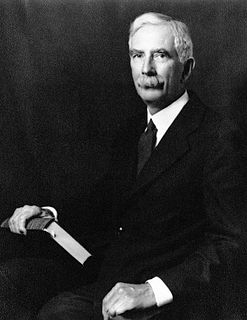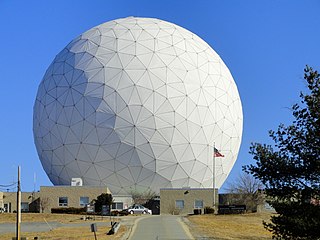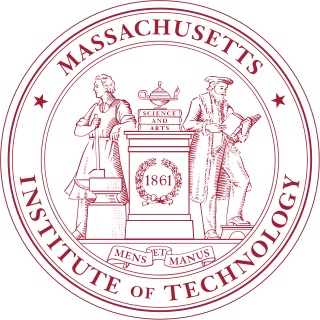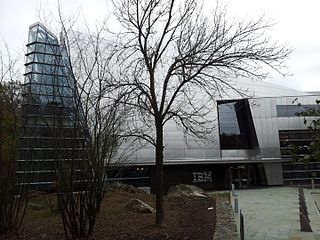
Sputnik 1 was the first artificial Earth satellite. The Soviet Union launched it into an elliptical low Earth orbit on 4 October 1957, orbiting for three weeks before its batteries died, then silently for two more months before falling back into the atmosphere. It was a 58 cm (23 in) diameter polished metal sphere, with four external radio antennas to broadcast radio pulses. Its radio signal was easily detectable even by radio amateurs, and the 65° inclination and duration of its orbit made its flight path cover virtually the entire inhabited Earth. The satelite’s unanticipated success precipitated the American Sputnik crisis and triggered the Space Race, a part of the Cold War. The launch was the beginning of a new era of political, military, technological, and scientific developments.

Explorer 1 was the first satellite launched by the United States, and was part of the U.S. participation in the International Geophysical Year. The mission followed the first two satellites the previous year; the Soviet Union's Sputnik 1 and 2, beginning the Cold War Space Race between the two nations.
Project Vanguard was a program managed by the United States Naval Research Laboratory (NRL), which intended to launch the first artificial satellite into Earth orbit using a Vanguard rocket as the launch vehicle from Cape Canaveral Missile Annex, Florida.

Charles Greeley Abbot was an American astrophysicist and the fifth secretary of the Smithsonian Institution, serving from 1928 until 1944. Abbot went from being director of the Smithsonian Astrophysical Observatory, to becoming Assistant Secretary, and then Secretary of the Smithsonian Institution over the course of his career. As an astrophysicist, he researched the solar constant, research that led him to invent the solar cooker, solar boiler, solar still, and other patented solar energy inventions.
The Vanguard rocket was intended to be the first launch vehicle the United States would use to place a satellite into orbit. Instead, the Sputnik crisis caused by the surprise launch of Sputnik 1 led the U.S., after the failure of Vanguard TV3, to quickly orbit the Explorer 1 satellite using a Juno I rocket, making Vanguard I the second successful U.S. orbital launch.

The Summer Science Program (SSP) is an academic summer program where high school students experience college-level education and do research in celestial mechanics by studying the orbits of asteroids or biochemistry by studying the kinetic properties of enzymes. The program was established in 1959 at The Thacher School in Ojai, California. It now takes place on two astrophysics campuses, New Mexico Tech in Socorro, New Mexico and University of Colorado, Boulder in Boulder, Colorado, and two biochemistry campuses, Purdue University in West Lafayette, Indiana and University of California San Diego in La Jolla, California.
Herbert Reuben John Grosch was an early computer scientist, perhaps best known for Grosch's law, which he formulated in 1950. Grosch's Law is an aphorism that states "economy is as the square root of the speed."

Leonard Carmichael was an American educator and psychologist. In addition, he became the seventh secretary of the Smithsonian Institution in 1953.

Haystack Observatory is an astronomical observatory owned by Massachusetts Institute of Technology (MIT). It is located in Westford, Massachusetts (US), approximately 45 kilometers (28 mi) northwest of Boston. Haystack was initially built by MIT's Lincoln Laboratory for the United States Air Force and was known as Haystack Microwave Research Facility. Construction began in 1960, and the antenna began operating in 1964. In 1970 the facility was transferred to MIT, which then formed the Northeast Radio Observatory Corporation (NEROC) with a number of other universities to operate the site as the Haystack Observatory. As of January 2012, a total of nine institutions participated in NEROC.
Gordon H. Pettengill is an American radio astronomer and planetary physicist. He was one of the first to take radar from its original military application to its use as a tool for astronomy. He is professor emeritus at the Massachusetts Institute of Technology.
The Prince Albert Radar Laboratory (PARL) was a radar research facility operated by the Defence Research Telecommunications Establishment (DRTE), part of the Canadian Defence Research Board. Its primary purpose was to test long-range radio propagation and radar techniques in the presence of the aurora borealis. This was part of a greater ABM effort being carried out in concert with the United States Air Force, and PARL operated along with two similar instruments at the Rome Air Development Centre and MIT Lincoln Laboratory. The site continues to operate today, used as a satellite downlink station known as the Prince Albert Satellite Station (PASS).

Satellite watching or satellite spotting is a hobby which consists of the observation and tracking of artificial satellites that are orbiting Earth. People with this hobby are variously called satellite watchers, trackers, spotters, observers, etc. Since satellites outside Earth's shadow reflect sunlight, those especially in low Earth orbit may visibly glint as they traverse the observer's sky, usually during twilight.

George B. Field is an American astrophysicist.
Project Space Track was a research and development project of the US Air Force, to create a system for tracking all artificial earth satellites and space probes, domestic and foreign.
Michael Peter Barnett was a British theoretical chemist and computer scientist. He developed mathematical and computer techniques for quantum chemical problems, and some of the earliest software for several other kinds of computer application. After his early days in London, Essex and Lancashire, he went to King's College, London, in 1945, the Royal Radar Establishment in Malvern in 1953, IBM UK in 1955, the University of Wisconsin Department of Chemistry in 1957, and the MIT Solid State and Molecular Theory Group in 1958.
Operation Phototrack was among the programs quickly organized in the United States, after the Soviet earth satellite Sputnik 1 was launched on 4 October 1957, to fill the temporary tracking gap until the Baker-Nunn cameras specially designed to optically track U.S. satellites became operational. It was also referred to as the "Independent IGY Tracking Coordination Program".
The Orbiting Astronomical Observatory 2 was the first space telescope, launched on December 7, 1968. An Atlas-Centaur rocket launched it into a nearly circular 750-kilometre (470 mi) altitude Earth orbit. Data was collected in ultraviolet on many sources including comets, planets, and galaxies. It had two major instrument sets facing in opposite directions; the Smithsonian Astrophysical Observatory (SAO) and the Wisconsin Experiment Package (WEP). One discovery was large halos of hydrogen gas around comets, and it also observed Nova Serpentis, which was a nova discovered in 1970.













